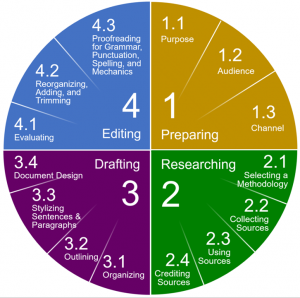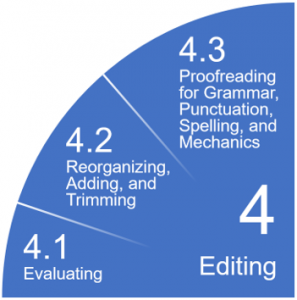Appendix D: Grammar, Punctuation, Spelling and Mechanics Support
Please note: this appendix appears in the web version of this textbook for ease of access. However, to limit the size of downloadable versions of this text (i.e. Print PDF, Digital PDF, and eReader versions), they have been removed.
Chapter Acknowledgements
This appendix has been adapted from the following text:
- Communication at Work by Jordan Smith is licensed under a Creative Commons Attribution 4.0 International License, except where otherwise noted.
The Importance of Revision and Proofing in Business Communication
Self-correction is an essential part of the writing process, one that students or professionals skip at their peril. Say you’ve just dashed off a quick email. Glancing back to ensure that it’s correct in terms of its grammar, punctuation, spelling, and mechanics helps you avoid confusing your reader or embarrassing yourself. Those errors can be like stains on your shirt or rips in your uniform: they give the impression that you’re incompetent or uncaring—qualities no employers respect because it suggests a lack of attention to detail.
Always keep in mind that people generalize to equate the quality of your writing with the quality of your work. Because readers tend to be judgmental, they may even draw bigger conclusions about your level of education, work ethic, and overall professionalism from even a small writing sample. Especially with résumés and cover letters where your words are the first impression employers have of you, employers are judgmental about your writing because customers can be. Employers don’t want you to represent their company to customers in a way that makes it look like the whole organization does shoddy, amateur work.
The final stage of the writing process is thus managing your readers’ impressions by editing your draft from beginning to end. This involves first returning to your headspace at the start of the writing process and assessing where your document is in relation to the purpose you set out to achieve for it (see Step 1.1 in §2.1 above). When you get a sense of how far your document is from achieving that primary purpose, you realize what needs to be done to close that gap—what you need to add, rewrite, delete, and improve. Your next move is a two-step editing process of substantial revisions and proof-editing. The order of these is crucial to avoid wasting time. You wouldn’t proofread for minor grammatical errors before substantial revisions because you may end up just deleting altogether paragraphs that you meticulously proofread with a fine-tooth comb.
Section Topics
We’ll divide the process into lessons you can apply to the editing process in the following order:
Figure 1: The four-stage writing process and Stage 4 Breakdown



